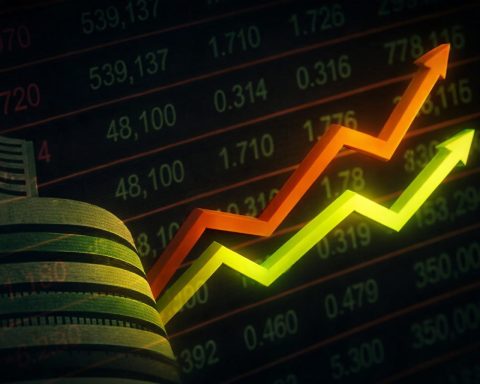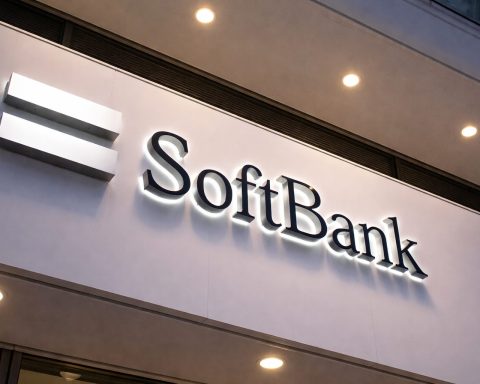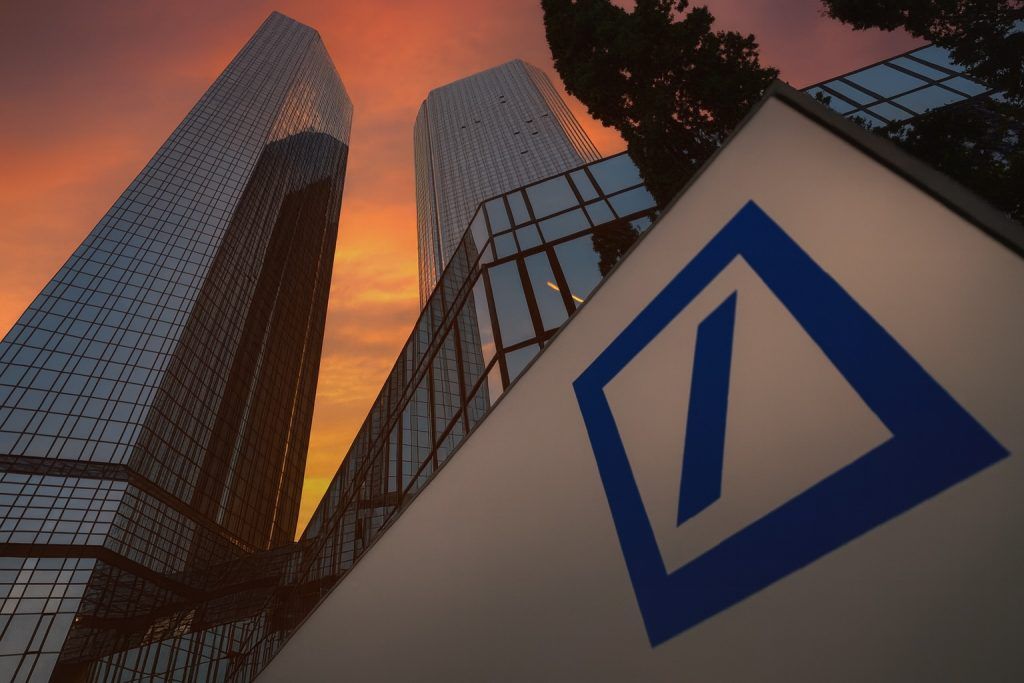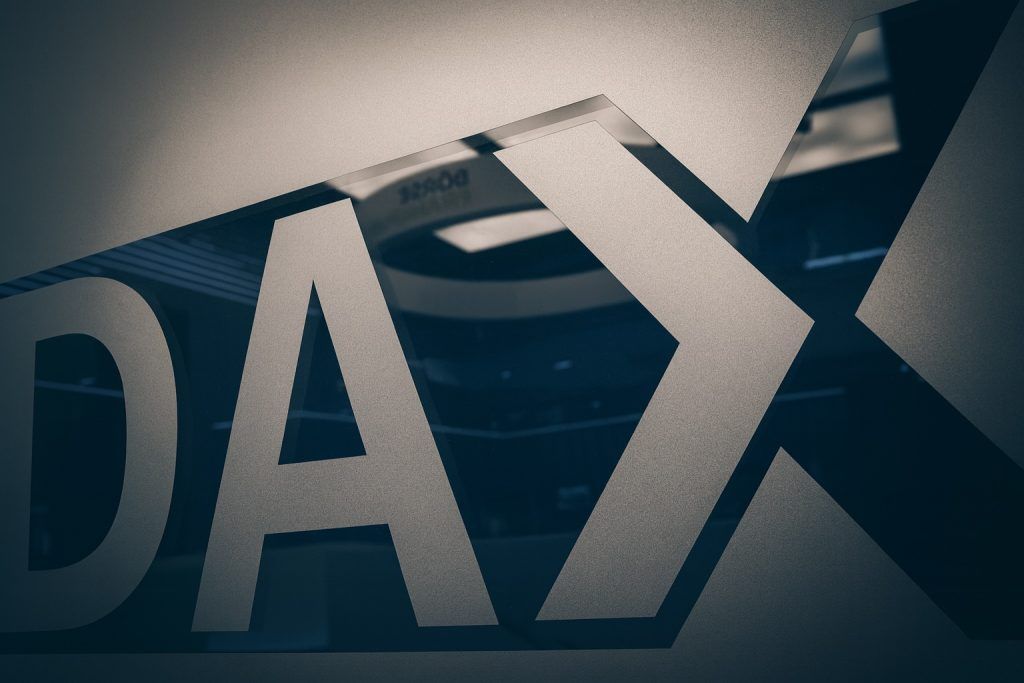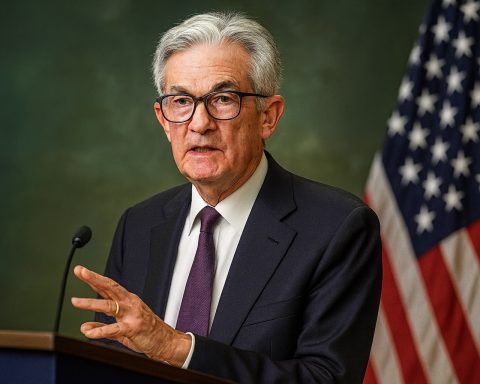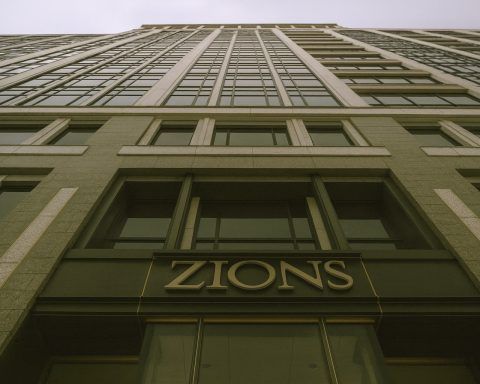- Two U.S. regional banks – Zions Bancorp and Western Alliance – disclosed surprise loan losses and alleged fraud, tanking their shares by about 12% and 10%, respectively [1]. The revelations revived eerie parallels to past bank crises and rattled investors worldwide.
- Contagion fears erased over $100 billion in bank stock value in a single day [2]. European bank indices sank ~3% as major lenders like Deutsche Bank (–6%) and Barclays (–5%) plunged [3]. Germany’s DAX index fell over 2% on Friday, and banking stocks led the selloff across London, Paris and other markets [4].
- JPMorgan CEO Jamie Dimon warned that more troubles could lurk beneath the surface: “When you see one cockroach, there are probably more, and so everyone should be forewarned” [5]. His caution underscored growing worry that recent U.S. bank woes may be just the beginning if hidden credit problems keep emerging.
- Jittery investors fled to safety: gold prices spiked to a record high around $4,378/oz (up ~8.5% for the week, the biggest jump since 2008) [6] [7]. Wall Street’s “fear gauge” (VIX volatility index) surged 22% to its highest since April [8]. U.S. government bond yields tumbled as traders now bet the Federal Reserve will cut interest rates as soon as its Oct. 29 meeting [9], hoping to contain any financial fallout.
- Market strategists note the issues appear isolated, not systemic – essentially tied to specific bad loans – rather than a broad banking meltdown [10]. Big banks have strong capital and just posted robust Q3 profits (boosting bank stocks earlier in the week) [11].
- Some analysts even see a buying opportunity in the turmoil. JPMorgan and RBC Capital, for example, reiterated bullish views on Western Alliance, recently lifting their stock price targets to around $100 (roughly 30–40% above the latest price) [12]. They argue the regional lender’s fundamentals remain solid despite the scare, though markets may stay volatile until confidence returns.
US Regional Bank Troubles Spark Global Selloff
Financial markets were hit by a flash of déjà vu as two U.S. regional banks revealed shock loan problems that sent their stocks into freefall and spooked investors worldwide. On Thursday, Zions Bancorporation of Utah announced it would write off $50 million on two commercial loans and even alleged borrower fraud, while Arizona-based Western Alliance disclosed it is suing to recover about $100 million on a bad loan tied to suspected fraud [13] [14]. These seemingly small-scale credit issues – on loans run through a private investment fund – had an outsized impact on market psychology. Shares of Zions plunged 13% and Western Alliance fell 11% by Thursday’s close [15], their worst one-day drops since the U.S. regional banking turmoil of 2023. “The problems of two US regional banks completely flipped sentiment,” observed Thomas Altmann, a portfolio manager at QC Partners in Frankfurt, noting that “fear of a new crisis is back” [16].
The news hit just as Wall Street had been trading higher on strong earnings, catching traders off guard. “What we see in the banks selling off overnight in the U.S., Asia wakes up to it, Europe wakes up to it, and so it spreads,” explained James Rossiter, head of global macro strategy at TD Securities [17] [18]. Indeed, by Friday morning the contagion had gone global: Japan’s Nikkei index slumped 1.6% and Hong Kong’s Hang Seng dropped 2%, followed by steep falls in Europe [19]. Bank stocks were at the epicenter. The STOXX Europe 600 Banks index shed nearly 3% [20] [21], with Germany’s Deutsche Bank down ~6% and Italy’s UniCredit down ~5% [22] [23]. In London, Barclays sank 4.7% and other UK lenders lost 3–5% [24]. By mid-day, Germany’s DAX index was down over 2% while the FTSE 100 in London and France’s CAC 40 each fell around 1.5% [25] [26]. “Europe’s exchanges have registered losses, especially financial stocks under pressure,” reported n-tv, a German business outlet [27]. It noted that European bank shares were hit by the U.S. fears despite no direct losses, as skittish investors sold first and asked questions later.
Over $100 billion of bank market capitalization was wiped out in one trading day, according to estimates cited by Swiss media [28]. This abrupt rout echoed the regional bank scare of March 2023 – when Silicon Valley Bank’s sudden collapse triggered global tremors – albeit on a smaller scale. “Investors will have memories about how problems in regional banks in 2023 sparked a sharp decline in global bank stock prices and falls in broader markets as well,” noted Vasu Menon, an investment strategist at OCBC Bank [29] [30]. Now, 18 months later, even isolated credit troubles at two mid-sized lenders managed to revive those ghosts of crisis.
“Cockroach” Warning and Credit Jitters
Wall Street’s top banker lent an ominous metaphor to the situation. JPMorgan Chase CEO Jamie Dimon – whose bank is the largest in the U.S. – had warned just days earlier that problems in the credit market could multiply. “When you see one cockroach, there are probably more,” Dimon said, “and so everyone should be forewarned” [31]. By week’s end his words felt prophetic. The loan losses at Zions and Western Alliance, though relatively modest in dollar terms, drew inevitable comparisons to last year’s regional bank failures and “raised broader questions over potential credit quality issues after a lengthy period of elevated rates and expansion in private credit,” observed Jim Reid, a strategist at Deutsche Bank [32] [33]. In other words, after years of cheap money and aggressive lending, investors are now nervously wondering if more “cockroaches” – hidden bad loans or even outright fraud – might be lurking on banks’ books.
Indeed, the two banks’ woes have roots in the booming but opaque private credit market. Both Zions and Western Alliance had exposure (through investment funds) to troubled borrowers in the auto industry. One was First Brands Group, a major auto-parts supplier that went bankrupt in September owing an estimated $10–50 billion [34] [35]. Another was Tricolor, a subprime auto lender whose collapse last month forced JPMorgan to write off $170 million in financing exposure [36]. These back-to-back failures have “rattled investors worried about risks in private credit, a booming but less regulated market where companies have borrowed heavily,” Reuters reported [37] [38]. Credit impairments in private debt have been rising, with default rates hitting ~5.5% in Q2, according to Mark Dowding, chief investment officer at RBC BlueBay Asset Management [39]. He noted that where defaults occur, lax lending terms and weak covenants are leading to larger losses than in the past [40]. This backdrop helps explain why seemingly isolated loan troubles at two banks sparked such a outsized reaction: they feed a narrative that the credit cycle has turned, and that more trouble spots could emerge after years of easy credit.
“Investors are nervous because the underlying cause here was loose lending standards and fraud,” said analyst Kyle Rodda of brokerage Capital.com, discussing the U.S. regional bank scare [41]. The worry is that such behavior may be more widespread, raising the risk of further defaults. However, Rodda added that the absolute size of these bad loans isn’t enough to endanger the overall financial system on its own [42]. In other words, the losses disclosed – on the order of tens of millions – are drops in the bucket for a multi-trillion-dollar banking sector. It’s the fear of the unknown that is driving the volatility. As Argus Research banking analyst Stephen Biggar put it: even isolated credit issues can spark “sell first and ask questions later” behavior in this climate [43]. “It shows you can’t take credit quality for granted, and poor performing credit at one bank can drag down the group quite fast,” Biggar warned [44].
Markets Whipsaw Between Panic and Policy Hopes
The abrupt shift in sentiment whipsawed markets that had been, until this week, rallying on optimism. Earlier in the week, major U.S. banks had impressed Wall Street with strong Q3 earnings, lifting bank stocks broadly [45]. The Dow Jones index was up over 300 points Thursday morning – until the bank scare headlines hit. By the closing bell, the Dow had slumped about 410 points and the S&P 500 and Nasdaq also flipped from green to red [46]. The KBW Regional Bank Index plunged roughly 6.5% on the day [47], marking its steepest one-day drop in six months [48] [49]. Not just banks felt the pain: big technology stocks fell as well, with Nvidia’s share price sliding around 3% amid a broader flight from risk assets [50] [51]. By Friday, U.S. stock futures remained under pressure, signaling a likely weak open in New York [52].
Amid the turmoil, investors poured into safe havens. Gold, the classic crisis hedge, soared nearly 2.5% on Thursday to hit an all-time high around $4,300 per ounce [53] [54]. By Friday it was on track for its best week in 17 years [55]. “This is a flight to safety we haven’t seen in a while,” noted one market strategist, pointing to gold’s record and the strength in the Swiss franc and Japanese yen – currencies that also gained as anxiety climbed [56]. Meanwhile the U.S. 10-year Treasury yield fell sharply as bond prices rose, reflecting a dash for the safety of government debt.
Crucially, the prospect of central bank intervention emerged as a strange source of hope for markets. In a matter of days, expectations flipped from further tightening to potential easing. “Investors are now fully pricing in an October U.S. rate cut,” Reuters reported, as bets grew that the Federal Reserve might respond to any brewing instability by cutting interest rates [57]. At one point on Friday, futures markets assigned a near 100% probability that the Fed will trim rates by 0.25% on October 29 at its upcoming meeting [58]. “Already at the next meeting, there could be a rate cut,” noted WirtschaftsWoche, citing growing market consensus [59]. Another quarter-point cut is even being discussed for December if needed [60]. This marks a dramatic turnaround in sentiment – just weeks ago, investors were debating if the Fed would pause hikes; now they’re debating how quickly it might cut. The European Central Bank, which has also been easing policy this year, may hold off until more data is available, but even in Europe the turmoil “has strengthened the doves” arguing for caution.
The mere whiff of possible rate relief seemed to help stem the bleeding in stock markets by Friday afternoon. Lower interest rates would ease pressure on banks and borrowers, after all. “Unlike in 2023, the risks appear more isolated this time, but they could feed into a narrative that the U.S. business environment and credit quality are worse than the data suggest,” observed Francesco Pesole, a strategist at ING, who added that the lack of fresh U.S. economic data (due to a government shutdown) and other headwinds have also weighed on sentiment [61] [62]. In short, markets are skittish and prone to overreact without clear data – but the flip side is that policymakers may be quicker to respond if volatility worsens. Fed officials in recent days have hinted at openness to easing: Governor Christopher Waller, for instance, suggested an additional rate cut could be warranted given “uneven” economic data, and some prominent Wall Street banks (like Morgan Stanley) now predict an imminent cut [63] [64].
Outlook: Crisis Contained or More to Come?
So far, most experts believe this is not the start of a full-blown banking crisis, but rather a tremor that illustrates pockets of risk in the financial system. “The size of these bad loans…shouldn’t pose system-wide risks on their own,” analyst Kyle Rodda emphasized, urging calm even as he acknowledged the nerves in the market [65]. Major banks remain well-capitalized, and importantly, 2025 is not 2023 – regulators and investors alike are quicker to react at the first sign of trouble. The consensus is that the issues at Zions and Western Alliance are idiosyncratic (tied to specific borrowers and funds) and not symptomatic of widespread balance sheet problems [66]. Supporting that view, the nation’s largest banks (JPMorgan, Bank of America, etc.) have just reported healthy profit gains, thanks to higher interest income and resilient loan demand [67]. Those fundamentals suggest a far cry from the systemic fragility of 2008 or even the panic of early 2023.
Yet, as this week proved, confidence is a fragile thing. The banking system’s interconnectedness means even a whiff of fraud or unexpected losses at one lender can stoke fears at others [68]. “Because the banking system is so interconnected, it still stoked fears of a larger crisis,” n-tv observed after the U.S. loan scare [69] [70]. Memories of last year’s bank runs – and of the extraordinary Fed backstop measures that followed – remain fresh [71]. It’s partly why investors reacted so swiftly to the Zions and Western Alliance news, essentially repeating the pattern: dump bank stocks first, dissect the details later. As one market commentator put it, the episode is “a sign of how tense Wall Street still is” after those 2023 regional bank failures [72].
Going forward, all eyes will be on upcoming earnings reports and guidance from regional banks to gauge if credit problems are spreading or staying contained. Western Alliance itself is due to report its third-quarter results on Oct. 21, and executives plan to address the loan issue and reassure investors [73]. Analysts are expecting solid results – about $2.11 per share in earnings, up sharply from last quarter [74] – and if the bank can hit those numbers while affirming that the fraud losses are a one-off, it could help calm the waters. “Western Alliance’s management has tried to calm the storm,” noted a Reuters report, emphasizing the bank’s strong capital and the isolated nature of the alleged fraud [75] [76]. Similarly, Zions will be closely watched for any further disclosures or reserve builds beyond the $60 million it set aside for the troubled loans [77] [78].
Market volatility is likely to remain elevated in the near term. The CBOE VIX index, often called the fear gauge, jumped again Friday morning – a sign that traders are hedging against further turmoil [79]. Some volatility is also coming from unrelated factors (like U.S.-China trade tensions and a lack of economic data due to the federal shutdown) [80]. But if the banking scare subsides without further incidents, equities could stabilize on the back of strong earnings and potential central bank easing. In fact, the broader stock market is still up substantially year-to-date – world stocks have risen about 16% in 2025, and European bank stocks were up ~40% YTD before this pullback [81] [82]. That impressive rally is one reason some say this correction was overdue. “There has already been unease that the rally might have gone too far,” Reuters noted, with high valuations making the market “nervous” and prone to sharp falls on any bad news [83] [84].
For now, investors and policymakers are on high alert. The head of the IMF, Kristalina Georgieva, admitted this week that risks in the booming private credit market “keep her awake at night” [85], a telling comment about where global financial fragilities may lie. But there’s also a sense of déjà vu – having seen this movie before, regulators are likely to react swiftly if needed, and larger banks can act as shock absorbers. The hope is that by shining a light on these roaches, banks will tighten risk management and prevent a few bad loans from infecting broader confidence. As JPMorgan’s Dimon urged regarding the recent loan scare, “everyone should be forewarned” [86] – but forewarned is forearmed.
In sum, the late-week bank stock rout has given investors a stark reminder that the effects of high interest rates and aggressive lending can still surface in unpleasant ways. So far it appears more a reality check than a full crisis [87]. Whether this turns into something more serious may depend on how many “cockroaches” are really out there – and how decisively central banks step in with the figurative flashlight and bug spray. For the moment, markets are recalibrating between fear and hope: fear that a credit crunch could ripple out, and hope that this scare will nudge authorities to keep the financial system well-supported (even if that means cutting rates a bit faster). As always, the truth will reveal itself in time – likely in the next few earnings reports and economic data releases. Until then, caution rules the day, but opportunistic investors are also scanning for bargains amid the carnage, believing that fundamentally sound banks sold off in a panic may rebound just as sharply when the dust settles [88].
Sources: Financial Times, Reuters, The Guardian, n-tv, WirtschaftsWoche, Blick, TechStock² (ts2.tech) [89] [90] [91] [92] [93] [94] [95] [96].
References
1. ts2.tech, 2. www.blick.ch, 3. www.n-tv.de, 4. www.n-tv.de, 5. www.reuters.com, 6. www.theguardian.com, 7. www.theguardian.com, 8. www.theguardian.com, 9. www.reuters.com, 10. www.n-tv.de, 11. ts2.tech, 12. ts2.tech, 13. www.n-tv.de, 14. www.n-tv.de, 15. www.n-tv.de, 16. www.n-tv.de, 17. www.reuters.com, 18. www.reuters.com, 19. www.theguardian.com, 20. www.reuters.com, 21. www.reuters.com, 22. www.reuters.com, 23. www.reuters.com, 24. www.theguardian.com, 25. www.theguardian.com, 26. www.theguardian.com, 27. www.n-tv.de, 28. www.blick.ch, 29. www.reuters.com, 30. www.reuters.com, 31. www.reuters.com, 32. www.theguardian.com, 33. www.theguardian.com, 34. www.theguardian.com, 35. www.theguardian.com, 36. www.n-tv.de, 37. www.reuters.com, 38. www.reuters.com, 39. www.reuters.com, 40. www.reuters.com, 41. www.n-tv.de, 42. www.n-tv.de, 43. ts2.tech, 44. ts2.tech, 45. ts2.tech, 46. ts2.tech, 47. ts2.tech, 48. www.reuters.com, 49. www.reuters.com, 50. www.reuters.com, 51. www.reuters.com, 52. www.theguardian.com, 53. ts2.tech, 54. www.theguardian.com, 55. www.reuters.com, 56. www.reuters.com, 57. www.reuters.com, 58. www.wiwo.de, 59. www.wiwo.de, 60. www.wiwo.de, 61. www.reuters.com, 62. www.reuters.com, 63. www.goldreporter.de, 64. www.goldreporter.de, 65. www.n-tv.de, 66. ts2.tech, 67. ts2.tech, 68. www.n-tv.de, 69. www.n-tv.de, 70. www.n-tv.de, 71. www.n-tv.de, 72. www.n-tv.de, 73. ts2.tech, 74. ts2.tech, 75. ts2.tech, 76. ts2.tech, 77. www.n-tv.de, 78. www.n-tv.de, 79. www.theguardian.com, 80. www.reuters.com, 81. www.reuters.com, 82. www.reuters.com, 83. www.reuters.com, 84. www.reuters.com, 85. www.theguardian.com, 86. www.reuters.com, 87. www.reuters.com, 88. ts2.tech, 89. www.n-tv.de, 90. www.reuters.com, 91. www.theguardian.com, 92. www.blick.ch, 93. www.theguardian.com, 94. www.reuters.com, 95. www.n-tv.de, 96. ts2.tech

